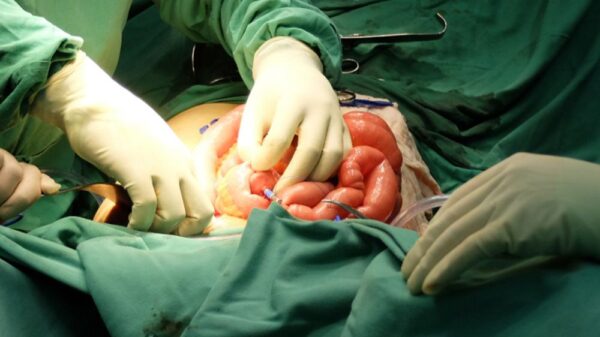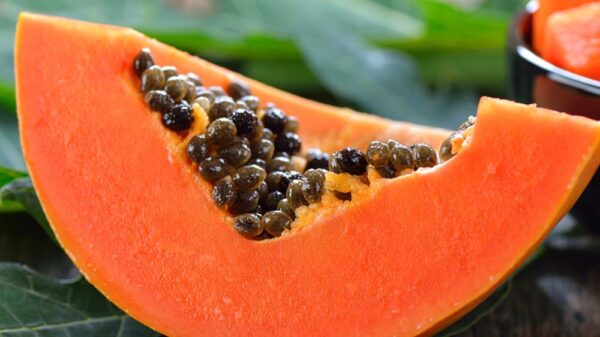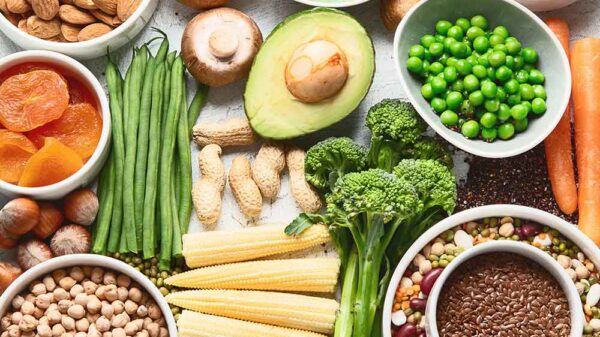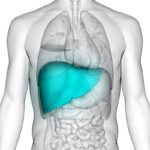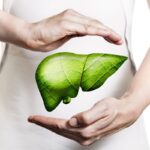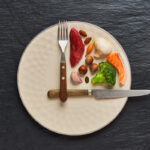Diverticulitis is a painful condition that affects the digestive tract, particularly the lower intestines. If you’ve received a diverticulitis diagnosis, you may have many questions about how to manage your condition. Are you wondering, “how can I treat diverticulitis at home?” If so, you’ve come to the right place. Here we provide a complete guide to diverticulitis and how to handle
What Is Diverticulitis?
Diverticulitis evolves from a condition called diverticulosis, and both conditions are referred to as a diverticular disease. Diverticulosis is a condition in which small pockets called diverticulum form along the lining of the intestine. The formation of diverticula tends to occur in the lower part of the large intestine, also called the sigmoid intestine.
On its own diverticulosis tends to have no symptoms. In fact, many people have no idea that they have diverticulosis for many years. Often someone with diverticulosis will only notice and become aware that they have the condition when tested for other gastrointestinal issues, or if diverticulosis develops into diverticulitis.
Diverticulosis makes itself known when it advances to diverticulitis. Diverticulitis occurs when small protruding pockets in the large intestine become infected and inflamed.
Risk Factors for Developing Diverticular Disease
Since diverticulosis and diverticulitis are closely related, we will go over the risk factors for developing both conditions. Though the exact cause of these conditions is unknown, there are a few risk factors that seem to increase the likelihood of developing the conditions.
- Older age: Individuals in later adulthood seem to be at a higher risk of developing diverticulosis. This is because the delicate tissue and muscle that lines the bowel walls have become more fragile and prone to damage over many years.
- Low-fiber diet: Constantly consuming a low-fiber diet seems to be a significant cause of diverticulosis. Consistently eating a diet low in fiber means that stools are small and dense, contributing to constipation. If it feels difficult to produce a bowel movement, an individual is likely to strain and increase the pressure within their colon. Repeated pressure over time is likely to damage the tissues in the lower intestine, causing the tissues to balloon outwards and produce a pocket in the wall of the colon known as a diverticulum.
- Sedentary lifestyle: Not exercising consistently and leading a sedentary lifestyle may increase the risk of developing diverticular disorder because it reinforces constipation.
- Poor diet: Eating an unhealthy diet high in saturated fat and meat may increase inflammation and lead to an increased likelihood of a diverticular disorder.
Things to Think About
Keep in mind that some people will go on to develop diverticulitis, while some people will only have diverticulosis. It is unclear why some people never develop diverticulitis. However, it may be related to continuing to consume a low fiber diet. Continuous strain in the bowels may force fecal matter into the pouches in the large intestine, causing an infection to develop.
Symptoms of Diverticulitis
While diverticulosis generally doesn’t cause any symptoms, diverticulitis is usually very painful. You may experience symptoms like:
- Abdominal pain: Because diverticulosis affects the lower part of the intestine closest to the rectum, your symptoms will affect the lower left quadrant of your abdomen. Pain can be intense and is commonly described as cramping.
- Bloating: If you have diverticulitis, you may experience a feeling of persistent bloating or fullness in the lower abdomen.
- Fever and chills: Fever and chills are generalized symptoms of infection, and along with the other symptoms in this list, are a good indication that you may be experiencing diverticulitis.
- Nausea: The infection in your large intestines may also cause nausea.
- Rectal bleeding: In some cases of infection, diverticular bleeding may occur and show up in your bowel movements.
The symptoms of diverticulitis tend to overlap with those that are characteristic of other gastrointestinal diseases like irritable bowel syndrome, Crohn’s disease, and ulcerative colitis. If you have any of these symptoms, it’s a good idea to go to your physician to make sure you’re getting an accurate diagnosis.
Complications of Diverticulitis
If you have a case of diverticulosis that develops into diverticulitis, this puts you at a greater risk of experiencing complications. Here are a few potential complications if diverticulitis is left untreated:
- Bowel obstruction: If diverticulitis lasts too long without intervention, it may affect the structure of the bowel tissue. An abnormal ballooning of the bowel tissue may occur, which blocks the movement of stools through the digestive tract.
- Peritonitis: If diverticulitis is left untreated, the infection may worsen and cause a perforation, or tear, in the bowel wall. When the bowel wall tears, this means that contents from the digestive tract can leak into the abdominal cavity. This spreads the infection beyond the bowels and can be life-threatening if not treated immediately.
- Abscess: An abscess forms when a pocket of infection becomes isolated in the bowels. Because it’s inaccessible to other areas of the body, treatment requires a physician to physically drain the abscess of pus and inflammatory fluid to help rid the infection.
Can Diverticulitis Go Away?
Most cases of mild diverticulitis can resolve on their own or with the help of oral antibiotics, which usually have few if any side effects.
How long does a diverticulitis flare-up last? If the case of diverticulitis is uncomplicated and has not spread, it may last about a week before it resolves. (1)
More serious flare-ups that have spread or caused complications usually require hospitalization and take several weeks to resolve. While in the hospital, you will be placed on intravenous antibiotics and fluids and fed a primarily liquid diet until symptoms resolve, at which point you will gradually begin to reintroduce solid foods into your diet. After you are discharged from the hospital, you will likely have a follow-up appointment with a gastroenterologist to determine the best strategy for preventing a recurrence.
In more rare cases, diverticulitis is constant or recurrent. Chronic diverticulitis can be effectively treated with surgical intervention. Surgery can remove the damaged part of the large intestine that is affected by the diverticula. The surgeon can then reattach the healthy segments of the large intestine to one another. This serves to remove the disease altogether and get rid of the recurrent symptoms.
How Is Diverticulitis Diagnosed?
A series of tests including a physical examination, blood tests, and imaging tests can be used to diagnose diverticulitis.
- Blood tests: Blood tests can be used to evaluate white blood cell count. If white blood cell count is too high, this indicates that the immune system is activated, and inflammation is present to fight infection.
- Colonoscopy and sigmoidoscopy: These exams entail inserting a small device with a camera into the rectum in order to produce an image of the inside of the colon. This examination can be used to evaluate the presence of ulcers or growths that could be causing symptoms. These tests can also help detect the presence of diverticulosis and inflammation and infection that indicates diverticulitis.
- Stool samples: Your physician may request that you provide a stool sample. Though it may feel a little awkward, a stool sample can provide a great deal of information about what’s going on inside your colon. The stool sample will be sent to a lab, where it’s analyzed for blood and bacteria.
- CT scans and x-rays: Imaging tests can help a physician visualize any abnormal shapes or structural nature of the bowels and colon.
How Can I Treat Diverticulitis At Home?
If you’ve visited the doctor and have a confirmed case of diverticulitis, you have likely obtained an oral antibiotic like ciprofloxacin or amoxicillin. While healing from a diverticulitis episode, here are some helpful guidelines to follow.
1. Stick to a Low-Fiber Diet
Though a high-fiber diet is critical for preventing diverticulitis, a high-fiber diet can actually cause irritation once diverticulitis has set in, and you’re trying to heal from it. To soothe symptoms, watch your fiber intake. To give your digestive system a rest while you heal, stick to low-fiber foods that are easy to digest. Steer clear of whole grains, raw fruits and vegetables with the skin, nuts, seeds, and beans. Here are a few examples of low fiber foods you can eat while healing:
- White bread
- White pasta
- Cream of wheat cereal, or any refined cereal
- Canned fruits and vegetables, like applesauce, carrots, and green beans
- Cooked fruits and vegetables with the skins removed
- Small amounts of chicken breast or fish
- Small amounts of nonfat yogurt
2. Eat Mainly Soft Foods
Eating soft or mashed foods can help soothe the digestive system as you recover from diverticulitis. Here are a few examples of soft foods that can help calm your digestive system as you heal:
- Mashed potato: White potato or sweet potato works in this case. Just make sure that the skin is removed to keep fiber at a minimum.
- Jell-O: Jell-O is tasty and provides a little bit of energy.
- Smoothies: Making or getting prepared smoothies is a great way to mix up the flavors while providing your body with energy.
- Toast: Toast with a little bit of jam or creamy peanut butter makes a good breakfast or snack. Just make sure to choose white toast that’s low in fiber.
3. Drink Plenty of Fluids
Staying hydrated is crucial, especially when you’re recovering from an illness or infection. Drinking plenty of fluids allows your blood volume to stay up, increasing circulation and allowing your blood vessels to more readily deliver nutrients to areas of the body that need it, such as those areas that are fighting infection. Here are examples of fluids to drink as you recover from infection:
- Water
- Tea
- Apple juice
- Sports drinks
4. Stick to Protein That’s Easy to Digest
Most animal protein sources like meat and dairy are tough on the digestive system, cause inflammation, and may even worsen your symptoms of diverticulitis. Plant sources of protein like beans and nuts tend to be packed with fiber, which can also worsen your symptoms of diverticulitis. So, what should you do to make sure you’re getting the protein you need? Stick to shakes that include a high-quality essential amino acid supplement. These supplements offer an optimal balance of essential amino acids in their pure, individual forms, so stress doesn’t need to be placed on the digestive system to break down whole protein particles into useable amino acids. Making shakes with frozen banana, soymilk, a little peanut butter, and essential amino acid powder will ensure that your immune system stays strong and your muscles stay healthy while you recover from diverticulitis.
5. Rest
Remember that you are recovering from an infection! Take it easy as you recover from diverticulitis. Allowing your body to rest will support a healthy immune response as your immune system, and the antibiotics work together to clear the infection. You may need to take a day off work, work from home, and take a few naps. This will allow your body to make a fast and full recovery.
Things to Keep in Mind
Your physician will provide a set of guidelines for when to introduce certain foods back into your diet. Always follow your medical advice and discuss your specific needs with your healthcare provider before adding supplements to your diet or changing your dietary regimen.
Preventing Diverticulitis Attacks in the Future
Once your case of diverticulitis has resolved, there are steps you can take to prevent the development of another diverticulitis episode in the future. It’s important to note that simple carbohydrates and a low-fiber diet are not recommended to prevent diverticulitis. Keep reading to find out helpful guidelines for preventing diverticulitis attacks in the future.
1. Consume a High-Fiber Diet
Fiber is extremely important for encouraging regular bowel movements and promoting overall gastrointestinal health. Eating a diet that’s high in fiber is also a crucial part of preventing another episode of diverticulitis. When your diet is filled with fiber, you rarely have to strain while attempting to pass a bowel movement. This will help prevent fecal matter from entering the pouches within the large intestine, which helps prevent infection.
Besides encouraging regular and painless bowel movements, consuming a diet high in fiber is critical for balancing the gut microbiome. Beneficial bacteria that live in the gut and help break down food particles. Eating an abundance of fiber supports the growth of beneficial bacteria, which produce anti-inflammatory compounds as a byproduct of food breakdown. By encouraging the growth of beneficial bacteria, the population of harmful bacteria will decrease to help promote overall gut health.
There are two kinds of dietary fiber: insoluble and soluble fiber. Insoluble fiber does not disintegrate in water and instead remains primarily intact as it travels through the digestive system. This insoluble fiber is mainly found in the fibrous parts of plant-based foods. On the other hand, soluble fiber is a type of fiber that does break down in the presence of water, and it is also present in plant-based products. Excellent sources of fiber include fruits, vegetables, whole grains, beans, nuts, and seeds.
2. Stick Primarily to Plant Proteins
As discussed above, meat and dairy are difficult to digest. They are also very low in fiber and in many cases, can contribute to constipation. However, especially if you are an older adult, it is critical to your overall health that you get ideal amounts of protein and essential amino acids in your daily diet.
Combining vegetable sources throughout the day is the only way to get optimal ratios of essential amino acids from plant proteins. This is because no single plant protein provides all essential amino acids in optimal ratios. Tofu, whole grains, beans, nuts, and seeds are all sources of plant protein that are also rich in fiber.
Though combining plant proteins helps ensure that you’re getting optimal ratios of essential amino acids, it may still be a good idea to incorporate a high-quality supplement into your daily routine.
3. Drink Lots of Water
Drinking plenty of water is important for preventing constipation. Both fluids and fiber work together to make sure that the digestive system is running smoothly. Aim to drink at least 8 cups of water each day.
4. Stay Active
Did you know that getting exercise each day can help keep your bowels regular? Muscles are in all parts of your body, including the digestive system. Going for a brisk walk or working out for at least 30 minutes each day can stimulate the bowels and help them stay regular.
5. Probiotics
Taking probiotic supplements can also help reestablish a healthy gut microbiome that promotes healthy digestion and bowel movements. You can also get probiotic bacteria from foods such as kimchi, sauerkraut, kefir, and yogurt.
Conclusion: How Can I Treat Diverticulitis at Home?
Diverticulosis is a common condition affecting primarily older adults and results in the formation of pouches in the bowel wall. While diverticulosis typically isn’t accompanied by symptoms, diverticulitis is an infection of these pouches that can lead to serious complications if not treated properly. Thankfully, proper diet and nutrition can help recovery from a diverticulitis episode and can help prevent repeated episodes.

References:

